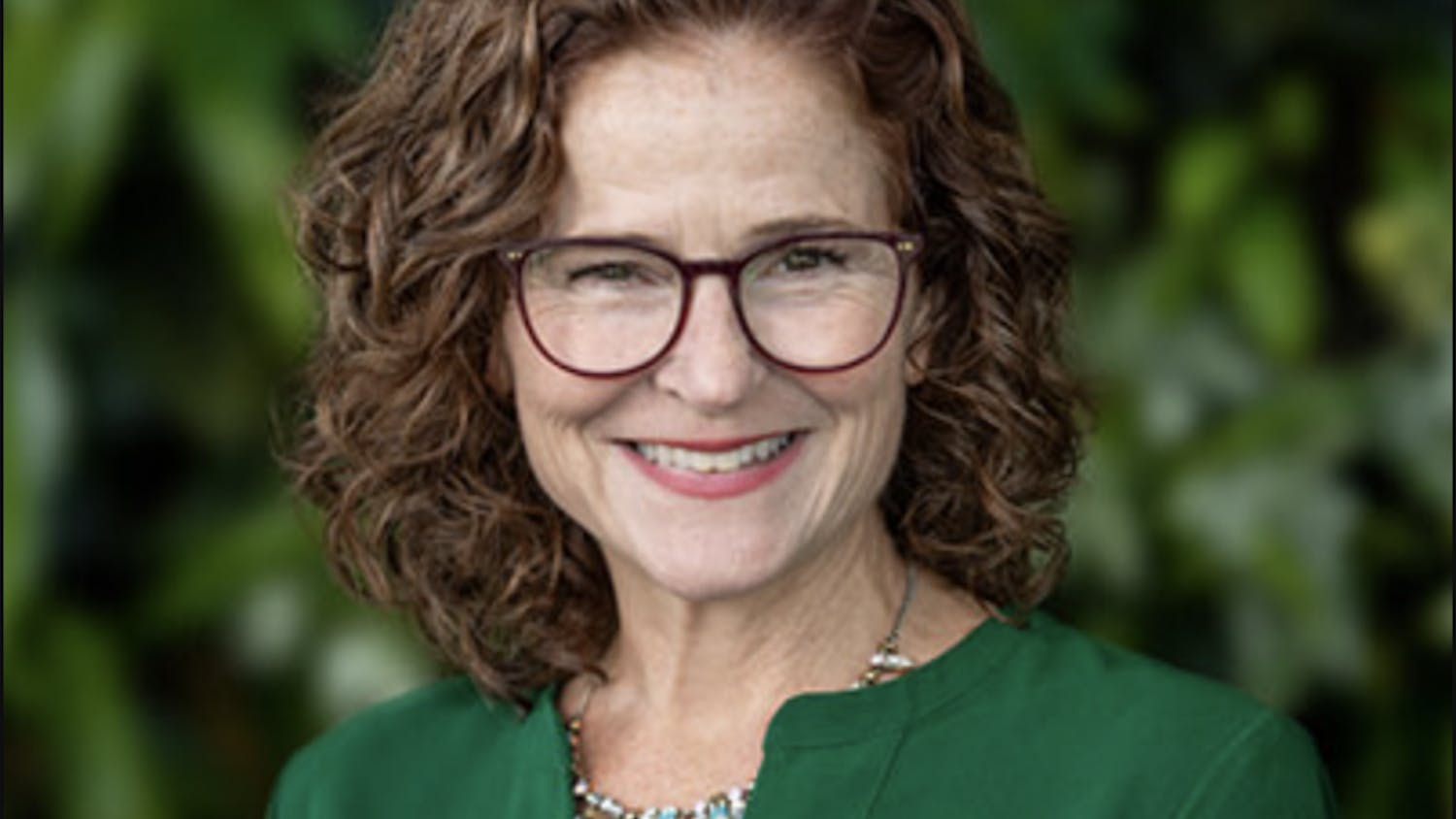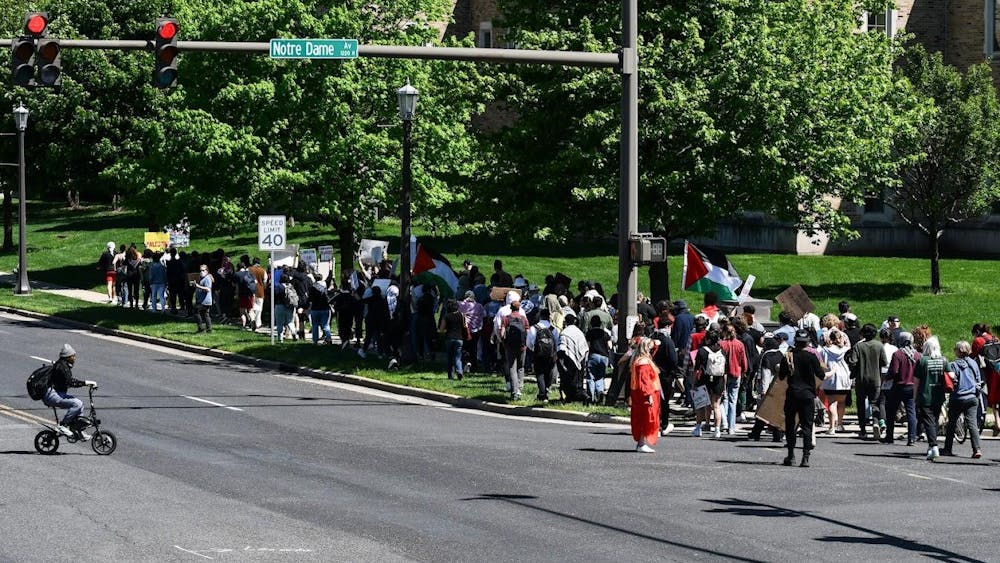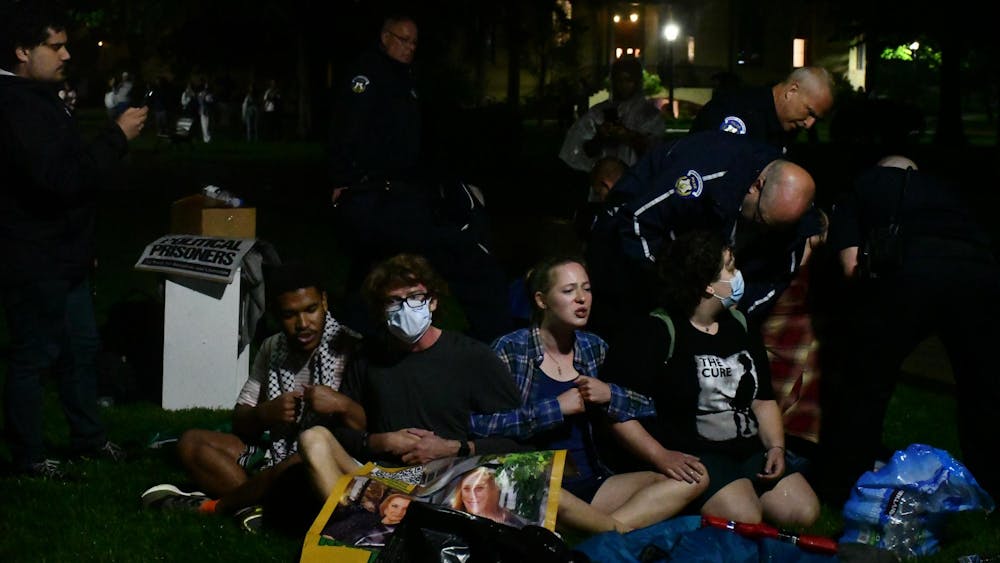In advance of Pope Francis's historic visit to the United States this week, Notre Dame is acting on the pontiff's message of sustainability and care for the environment.
After Tuesday morning's town hall meeting in Washington Hall, University President Fr. John Jenkins and Executive Vice President John Affleck-Graves held a press conference to discuss the University's new initiative to end all use of coal by 2020 and to reduce the University's carbon footprint by more than half by 2030.
The initiative, announced in a press release Monday, comes as a response to Pope Francis’s May encyclical “Laudato Si,” Jenkins said.
“We have had efforts in sustainability … and we made really very good progress over the past decade, at least,” Jenkins said at the press conference.“But this summer, when Pope Francis promulgated his encyclical ‘Laudato Si’, I went to John [Affleck-Graves] and I said, ‘John, let’s look at it. Can we take a further step? Can we do a bit more to respond to the Pope’s encyclical, to respond to the challenge of the environment?’”
According to the press release, Notre Dame will also invest $113 million in renewable energy including geothermal, solar, hydroelectric and biomass sources. Affleck-Graves said the University will keep its options open with these technologies, including possibly installing solar panel fields somewhere on campus.
“We would like, in the end, to have a fairly diversified strategy so that we have a little bit of each of those and eventually get to a stage where we can be fully renewable,” Affleck-Graves said.“But that’s probably going to take 40 to 50 years to get to be a fully renewable campus.”
Jenkins said this project will carry significant costs, but he and Affleck-Graves said they ultimately think the investment in sustainable energy will pay for itself. Eventually, the University hopes these technologies will decrease Notre Dame’s carbon dioxide emissions by 47,500 tons per year, or the equivalent to taking 10,000 cars off the road, according to the press release.
“It will cost us,” Jenkins said. “It will cost us; however in the long run, I’m hoping that some of these fuel sources can be cost effective.
“I think in a way, it’s the Pope calling us to take the long view. Often we take the short view, and if you take the long view, and if you’re innovative, there’s some pain up front, but in the long run, it’s more sustainable, and, we think, cost effective.”
The new initiative “is a continuation, but a kind of augmentation” of the University's efforts to reduce its environmental impact, Jenkins said. Affleck-Graves said Notre Dame has decreased its coal use from about 85 percent of campus’s total energy use in the mid-2000s, to 15 percent now. A large part of the strategy going forward, Affleck-Graves said, is conservation.
“We’ve been working very hard since the early 2000s on the concept of ‘it’s the responsibility of everybody to honor the planet and to leave the planet in a better state than we got it,’ and a big part of that is conservation,” he said.“We estimate we can decrease our carbon footprint by 15 to 20 percent just by conservation efforts, so we’ve worked hard on those. And then there are a variety of other issues that we’re looking at.”
Jenkins will be in Washington, D.C. on Wednesday and Thursday for Pope Francis’s visit, and said he hopes the University’s renewed and more aggressive approach to reducing its carbon footprint will resonate with other universities and the general population as a way to heed the Pope’s call to care for the planet.
“I hope it affects other universities, but I hope it also gives an example just to the population at large, just about taking these issues seriously and taking the steps we can,” Jenkins said. “Again, we want to join with the Holy Father, the Pope, in his call to take these issues about nurturing the environment seriously.”
At the afternoon town hall meeting, Jenkins gave an overview of changes to campus life, including sustainability, and Affleck-Graves announced campus facility updates. Vice President for Human Resources John McQuade also explained the changes being made in the health insurance of staff and faculty.
Jenkins spoke on the need for the University to become more efficient in order to offer more support to students and their families.
“Notre Dame costs a lot of money for the families who send their children here,” he said. “It is extremely important that we are efficient and conscientious in running this place. We work very hard in providing financial aid, but we still have to be conscious about this. … You read that higher education is bloated and inefficient, complacent, it’s not run effectively, and I cannot believe that’s true for Notre Dame.”
Affleck-Graves said the University is planning two off-campus building projects: a boathouse for the men’s and women’s rowing teams at Viewing Park, set to be completed in December, and the Notre Dame Turbomachinery Facility in South Bend's Innovation Park.
“This [facility] not only is going to help with our research, but it will also help the economic engine in our community,” Affleck-Graves said. “It’s a wonderful collaboration to help with the city and its businesses and the people. In this facility, what they’re going to do is test gas turbine engines.”
Affleck-Graves said the University is addressing several faculty-raised facility issues, including a lack of short-term parking and elevators in need of repair at Flanner and Grace Halls. He said the University will be adding short-term parking lots near O’Shaughnessy Hall and Galvin Life Science Center, and the elevators in both Flanner and Grace Halls will be fixed over the course of several months.
“The good news is we can replace each of the six elevators,” he said. “The bad news is that it’s much more complicated to fix than I thought. Each elevator has to be replaced and they have to redo the shaft and it takes three months per elevator. We have a plan to do this over nine months total in each building.”
Staff health insurance will be undergoing changes, McQuade said, with the addition of a new high deductible plan and a switch to active enrollment.
“It’s not like all the plans are going to dramatically change,” he said. “But it is imperative that you be informed about your health care choice because we are adding plans, and it’s absolutely critical to us that the right people choose the right plans.”













